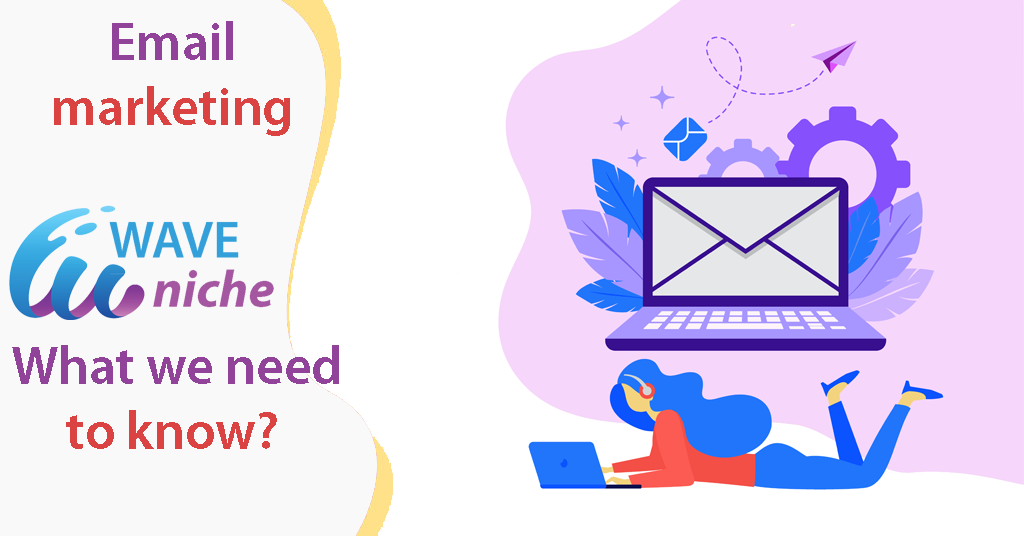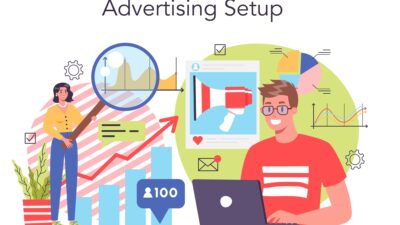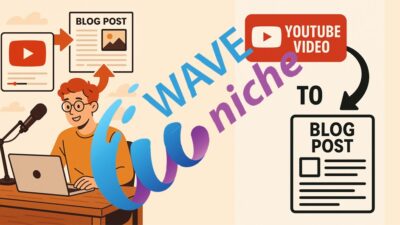Email marketing is a digital marketing strategy that involves sending commercial messages, promotional content, or newsletters to a group of individuals via email. The goal of email marketing is to engage with customers, build brand loyalty, and increase sales or revenue.
Here are some best practices for email marketing:
Build an email list:
Start by building a quality email list of individuals who have opted in to receive your emails. You can do this by offering a lead magnet, such as a free ebook, to entice individuals to sign up.
Building an email list is an important step in email marketing. Here are some effective ways to build an email list:
- Offer a lead magnet: Offer a free resource, such as an e-book, white paper, or a discount, in exchange for the email address of your visitors. Make sure that the resource is relevant and valuable to your target audience.
- Add a signup form on your website: Add a simple and prominent signup form on your website, preferably in the header or footer, so visitors can easily sign up to receive your emails.
- Use pop-up forms: Use pop-up forms that appear after a certain amount of time, or when the user scrolls down a certain percentage of the page, to capture the attention of your visitors.
- Host events: Host events such as webinars, workshops, or seminars and collect email addresses from attendees who sign up to participate.
- Use social media: Use your social media channels to promote your email list and offer incentives for followers who sign up, such as exclusive content or discounts.
- Offer a referral program: Encourage your existing subscribers to refer their friends and family to sign up for your email list by offering a referral program with rewards.
Remember that it’s important to always ask for permission before adding someone to your email list. Ensure that your subscribers have opted-in and are interested in receiving your emails to avoid being marked as spam.
Personalize your emails:
Use the recipient’s name in the subject line and personalize the content to make it more relevant to their interests.
Personalizing your emails is a great way to increase engagement and build stronger relationships with your subscribers. Here are some tips for personalizing your emails:
- Use the recipient’s name: Use the recipient’s name in the subject line and throughout the email to make it feel more personal.
- Segment your email list: Segment your email list based on demographics, interests, or behavior and send targeted and relevant content to each group.
- Use dynamic content: Use dynamic content to display different images, text, or offers based on the recipient’s behavior or past interactions with your brand.
- Send triggered emails: Send triggered emails based on specific actions taken by the recipient, such as abandoned cart emails or post-purchase follow-up emails.
- Use location-based personalization: Use location-based personalization to send offers or promotions that are specific to the recipient’s location.
- Personalize the sender name: Use a recognizable and personal sender name, such as the name of a company executive or a team member, to make the email feel more personal.
Remember that personalization should go beyond simply using the recipient’s name. It’s important to tailor the content and messaging of your emails to the specific interests and needs of your subscribers to make your emails more engaging and effective.
Create engaging content:
Create engaging and informative content that is relevant to your audience. Keep the content concise, visually appealing, and easy to read.
Creating engaging content is key to the success of your email marketing campaigns. Here are some tips to create engaging content for your emails:
- Keep it concise: Keep your content concise and easy to read. Use short paragraphs, bullet points, and images to break up the text and make it more visually appealing.
- Use a clear and catchy subject line: Use a subject line that grabs the recipient’s attention and entices them to open the email. Keep it short and to the point.
- Provide value: Provide valuable and informative content that is relevant to your audience. Share tips, insights, or industry news that your subscribers will find helpful.
- Include images and videos: Include images and videos to make your content more engaging and visually appealing. Use high-quality images and videos that align with your brand and messaging.
- Use a conversational tone: Use a conversational tone in your emails to make them feel more personal and engaging. Write as if you’re having a conversation with a friend.
- Include a call-to-action (CTA): Include a clear and prominent call-to-action (CTA) in your email that encourages the recipient to take action, such as “Shop Now” or “Learn More.”
- Test and optimize: Test different formats, subject lines, and content to see what works best for your audience. Use metrics like open rates, click-through rates, and conversion rates to measure the effectiveness of your emails and optimize your content accordingly.
Remember to focus on providing value to your subscribers and building a relationship with them through your emails. By creating engaging and relevant content, you’ll keep your subscribers interested and more likely to take action.
Segment your email list:
Segment your email list into smaller groups based on demographics, interests, or behavior to send targeted and relevant content to each group.
Segmenting your email list is a powerful way to increase the relevance of your email campaigns and improve engagement with your subscribers. Here are some steps to help you segment your email list:
- Define your segments: Define your segments based on relevant characteristics such as location, interests, behavior, or purchase history.
- Collect data: Collect data from your subscribers using sign-up forms, surveys, or by tracking their behavior on your website.
- Use an email marketing platform: Use an email marketing platform that allows you to create segments and send targeted campaigns to each segment. Example – mailchimp
- Personalize your content: Personalize the content of your emails based on the interests and characteristics of each segment. For example, if you have a segment of customers interested in a particular product, you can send them targeted promotions or product recommendations.
- Test and optimize: Test different messages, offers, and designs for each segment and measure their effectiveness using metrics like open rates, click-through rates, and conversions.
- Adjust your segments as needed: Adjust your segments as you gather more data and analyze the performance of your campaigns. You may find that certain segments are more or less engaged than others, and you can adjust your strategies accordingly.
By segmenting your email list, you’ll be able to send more relevant and targeted messages to your subscribers, which can lead to higher engagement, more conversions, and ultimately, more revenue for your business.
Use a clear call-to-action:
Use a clear and prominent call-to-action (CTA) in your email, such as “Shop Now” or “Learn More,” to encourage recipients to take action.
A clear call-to-action (CTA) is an essential component of any email marketing campaign. Here are some tips to help you create a clear call-to-action:
- Use action-oriented language: Use action-oriented language that tells the reader what they need to do, such as “Shop Now” or “Download the Guide.”
- Make it prominent: Make your CTA prominent by using a different color, font, or button design. This will help it stand out from the rest of the email content and make it more clickable.
- Keep it short and concise: Keep your CTA short and to the point. Use a maximum of 5-7 words so that the reader can quickly understand what action they need to take.
- Place it above the fold: Place your CTA above the fold (in the top half of the email) so that it’s visible without having to scroll down.
- Repeat the CTA: Repeat the CTA multiple times throughout the email to reinforce the message and increase the chances of the reader taking action.
- Use urgency: Use urgency to encourage the reader to take action now. For example, use phrases like “Limited time offer” or “Act now” to create a sense of urgency.
- Test and optimize: Test different CTAs and placements to see which ones work best for your audience. Use metrics like click-through rates and conversions to measure the effectiveness of your CTAs and optimize them accordingly.
By using a clear and prominent call-to-action, you’ll increase the chances of your subscribers taking the desired action, whether it’s making a purchase, signing up for a newsletter, or downloading a resource.
Optimize for mobile devices:
Make sure your emails are optimized for mobile devices since many people access their emails on their smartphones.
Optimizing your email marketing campaigns for mobile devices is crucial in today’s world, where more and more people are using their smartphones and tablets to check their emails. Here are some tips to help you optimize your email campaigns for mobile devices:
- Use a mobile-responsive email template: Use a mobile-responsive email template that automatically adjusts the layout and formatting to fit the screen size of the device.
- Keep your subject lines short: Keep your subject lines short and to the point so that they are fully visible on smaller mobile screens.
- Use a single column layout: Use a single column layout to make it easier for mobile users to scroll through the content.
- Use larger fonts and buttons: Use larger fonts and buttons that are easy to read and click on mobile devices. A font size of at least 14 points is recommended.
- Use a clear and prominent call-to-action: Use a clear and prominent call-to-action that is easy to click on a mobile device. Use a contrasting color for the CTA button to make it stand out.
- Optimize images: Optimize your images for mobile devices by compressing them to reduce the file size and using alt tags to provide a description of the image.
- Test your emails on different devices: Test your emails on different mobile devices to ensure that they are displayed correctly and all links and buttons are working.
By optimizing your email campaigns for mobile devices, you’ll be able to reach a wider audience and improve the user experience for mobile users. This can lead to higher open rates, click-through rates, and conversions, ultimately leading to a more successful email marketing campaign.
Test and measure:
Test different email formats, subject lines, and CTAs to see what works best for your audience. Use metrics like open rates, click-through rates, and conversion rates to measure the effectiveness of your email campaigns.
Testing and measuring the effectiveness of your email marketing campaigns is essential to improving their performance and achieving your goals. Here are some tips to help you test and measure your email campaigns:
- Define your goals: Define your goals and key performance indicators (KPIs) such as open rates, click-through rates, conversions, and revenue.
- Create a control group: Create a control group that receives the standard email campaign, and a test group that receives a modified version of the campaign with a specific change that you want to test.
- Test one variable at a time: Test one variable at a time, such as subject line, email copy, or call-to-action, to identify the specific factors that impact the performance of your email campaigns.
- Use A/B testing: Use A/B testing to test different versions of your email campaigns with different subject lines, email copy, or calls-to-action. This will help you identify the version that performs best.
- Monitor your metrics: Monitor your metrics and KPIs to measure the performance of your email campaigns. Use email marketing software to track open rates, click-through rates, and conversions.
- Analyze your results: Analyze your results to identify trends, patterns, and areas for improvement. Use this information to make data-driven decisions and optimize your future email campaigns.
- Continuously improve: Continuously improve your email campaigns based on the insights you gain from testing and measuring. Use what you learn to create more effective emails that resonate with your subscribers.
By testing and measuring your email marketing campaigns, you can identify the most effective strategies for engaging your subscribers and achieving your goals. This will help you create more effective campaigns in the future and drive more revenue for your business.
Remember that email marketing is all about building relationships with your subscribers. Provide value and build trust with your audience to see the best results from your email campaigns.




